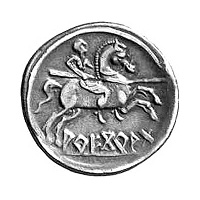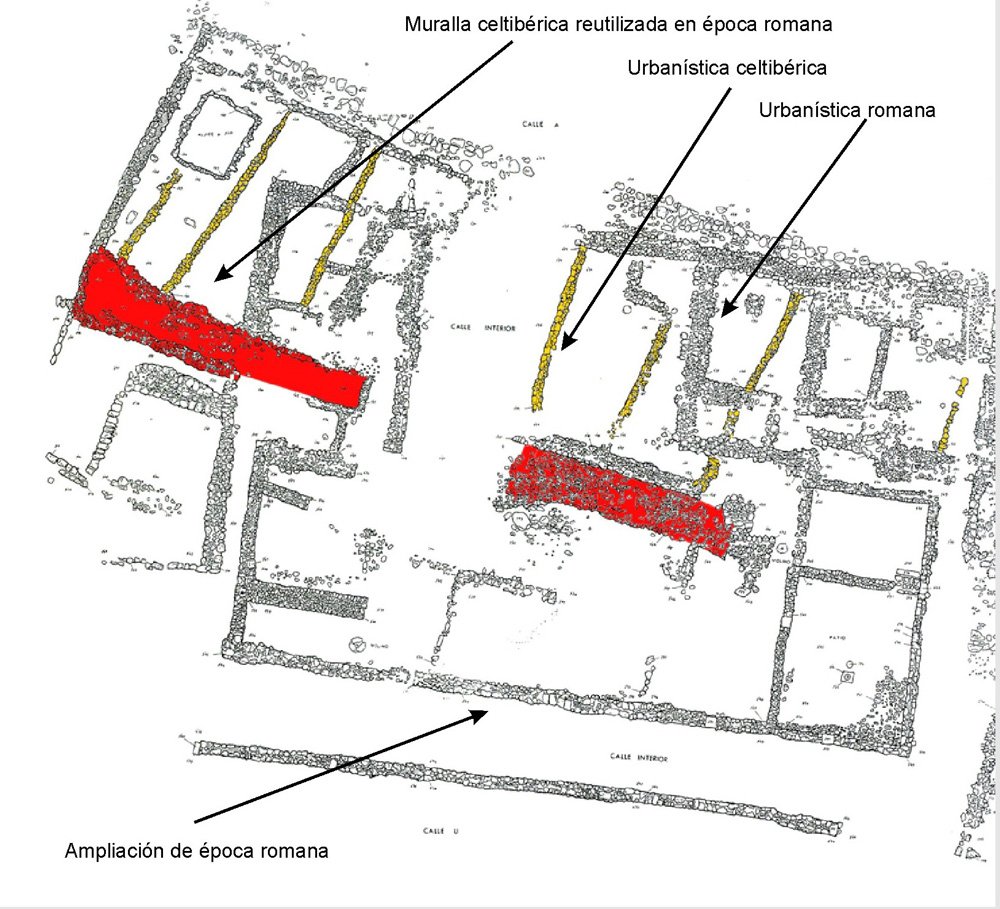Chapter VI
Who Reoccupied the Cerro de La Muela After Scipio’s Destruction of Numantia?
Appian’s account runs as follows: after the fall and destruction of Numantia, in 133 BCE, Scipio “having reserved fifty of them (the defeated) for his triumph, Scipio sold the rest and razed the city to the ground.” He adds “Having divided the territory of the Numantines among their near neighbours and transacted certain business in the other cities, threatening or fining any whom he suspected, he sailed for home”. In all likelihood, the phrase “near neighbours” here refers to the tribe of the Pellendones, who are not quoted in the classic texts on Rome’s wars with Numantia and must therefore have had no conflict with the Romans. They would come to be cited later by Pliny in the 1st century CE when a border-restoring policy was carried out.
Again, following Appian’s account, “The Romans, according to their custom, sent ten senators to the newly acquired provinces of Spain, which Scipio had received in surrender, or had taken by force, to settle their affairs on a peace basis”. Rome’s strategy in the Ebro Valley was to move the indigenous cities elsewhere, keeping their names. Conversely, in the zone of the High Douro, the cities were kept in the same place. Numantia was not again reoccupied until the times of Augustus.

The Excavations Commission (1906-1923) held that the Cerro de La Muela remained unpopulated after the Siege of Scipio in 133 BCE and until the new city raised in the era of Augustus, as from 29 BCE, according to Mélida. This claim, however is not supported by known archaeological documentation. A significant number of local and Roman coins, dating from 133 to 75 BCE, indicate trading relations between Numantia and cities of the Ebro Valley and the northeast of the Iberian peninsular. It is generally accepted that the minting of Celtiberian coins increased significantly during the Sertorian Wars.
It has also been argued, however, that this minting boom between the end of the second century and the start of the first century BCE was due to a border settlement recently set up but not yet properly organized and occupied. In addition to the abovementioned information, Numantia is known to have taken part in the Sertorian Wars (75-72 BCE); as well as the Roman sources, consideration must also be given here to a lead sling-bullet with the stamp of Sertorius, found in La Atalaya de Renieblas.
This coin-based information has to be fleshed out with the excavation work conducted by Schulten and Köenen in Block IV, which has brought to light another Celtiberian structure above the city destroyed by Scipio in 133 BCE and under the Imperial Roman city. The houses of this other city are also rectangular but longer and wider (16m by 6m), propped up on the narrow back side by the Celtiberian wall, which was destroyed in the Sertorian Wars (75-72 BCE). There is very little to go on, however, apart from further signs of this intermediate city in the cleansing and excavation work carried out in Block I of the southern neighbourhood.

These houses have 40cm-thick walls raised by wooden posts and covered by thatched roofs. This urban development now lies under the Imperial Roman city, with bigger, more complex houses. The settlers of this second Celtiberian city were in all likelihood related with the neighbouring peoples, the Pellendones, who helped Scipio take Numantia and were rewarded with the concession of the territory thereafter. This city would be destroyed along with Segontia Lanka (Langa de Douro, Soria), which, despite Taracena’s claim of a certain Roman influence, had houses built in the Celtiberian manner, with a stone socle and walls of adobe clad with clay-daubed branches, with the hallmark cave or cellar below many of them.
Gallery of chapter images
go on to chapter VII >>>Numantia: Transit City in the Times of Augustus
Bibliographical references
- Gómez Pantoja, Joaquín L. y Fernando Morales Hernández (2002). “Sertorio en Numancia: una nota sobre los campamentos de la Gran Atalaya”. Gladius, Anejos 5, pp. 303-310. ISBN: 84-86547-64-4.
- Jiménez Díez, Alicia (2017). “Las monedas halladas durante las excavaciones de A. Schulten en Renieblas”. En: Baquedano, Enrique y Marian Arlegui Sánchez (coord.). Schulten y el descubrimiento de Numantia. Catálogo de la exposición del Museo Arqueológico Regional de Alcalá de Henares, de abril a julio de 2017 y del Museo Numantino en Soria, de julio de 2017 a enero de 2018, pp. 302-317. ISBN: 978-84-451-3607-2.
- Mélida, José Ramón y Blas Taracena Aguirre (1923). Excavaciones de Numancia : memoria acerca de las practicadas en 1920-21. Madrid. CDU: 904(460.186 Numancia)
- Plinio el Viejo. Historia Natural, libros III-IV. Traducción y notas de Antonio Fontán, Ignacio García Arribas, Encarnación del Barrio y Mª Luisa Arribas. Editorial Gredos, Madrid, 1998. ISBN: 9788424919016.






